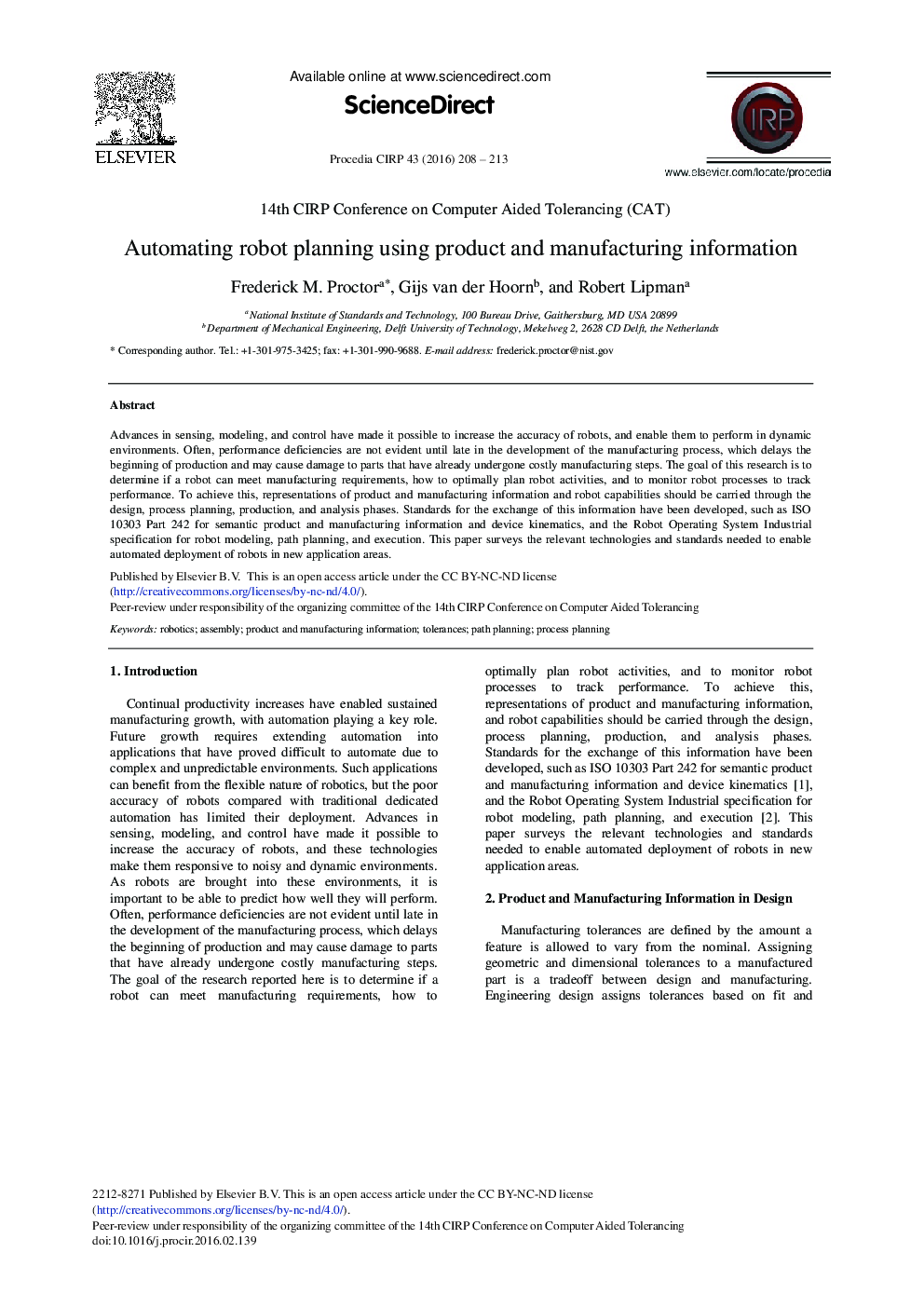| Article ID | Journal | Published Year | Pages | File Type |
|---|---|---|---|---|
| 1698768 | Procedia CIRP | 2016 | 6 Pages |
Advances in sensing, modeling, and control have made it possible to increase the accuracy of robots, and enable them to perform in dynamic environments. Often, performance deficiencies are not evident until late in the development of the manufacturing process, which delays the beginning of production and may cause damage to parts that have already undergone costly manufacturing steps. The goal of this research is to determine if a robot can meet manufacturing requirements, how to optimally plan robot activities, and to monitor robot processes to track performance. To achieve this, representations of product and manufacturing information and robot capabilities should be carried through the design, process planning, production, and analysis phases. Standards for the exchange of this information have been developed, such as ISO 10303 Part 242 for semantic product and manufacturing information and device kinematics, and the Robot Operating System Industrial specification for robot modeling, path planning, and execution. This paper surveys the relevant technologies and standards needed to enable automated deployment of robots in new application areas.
